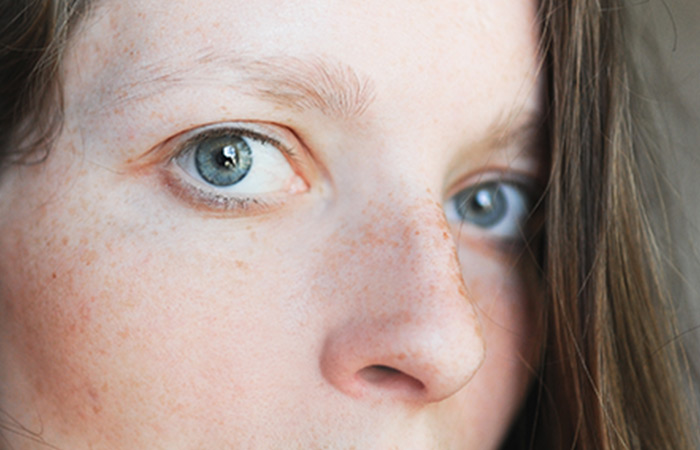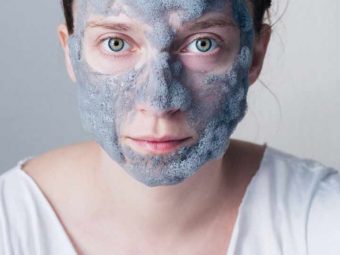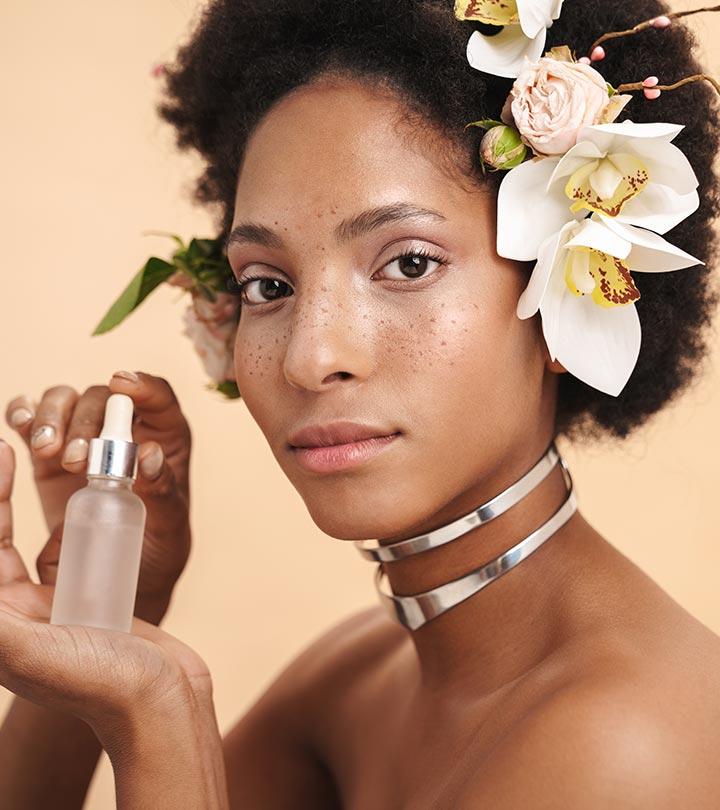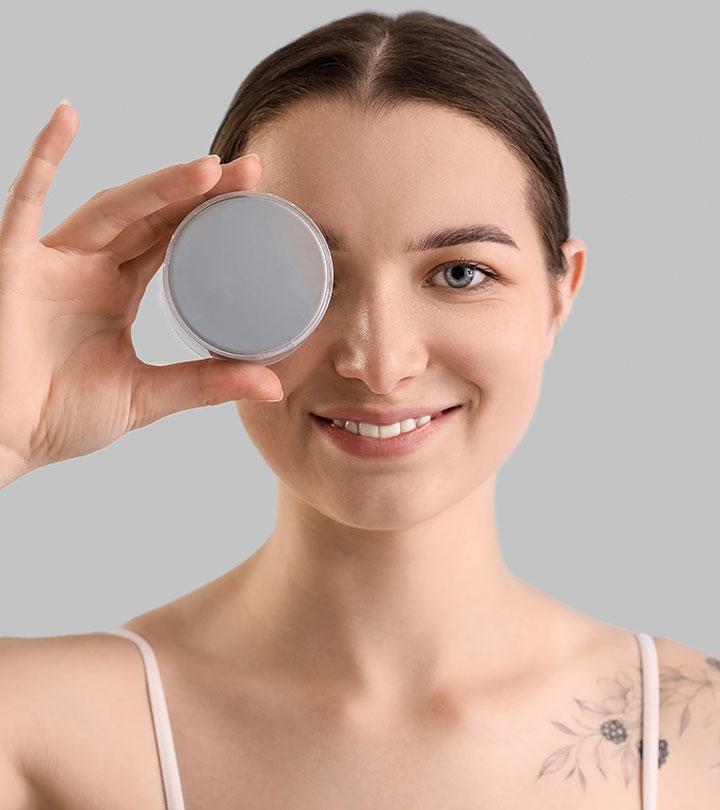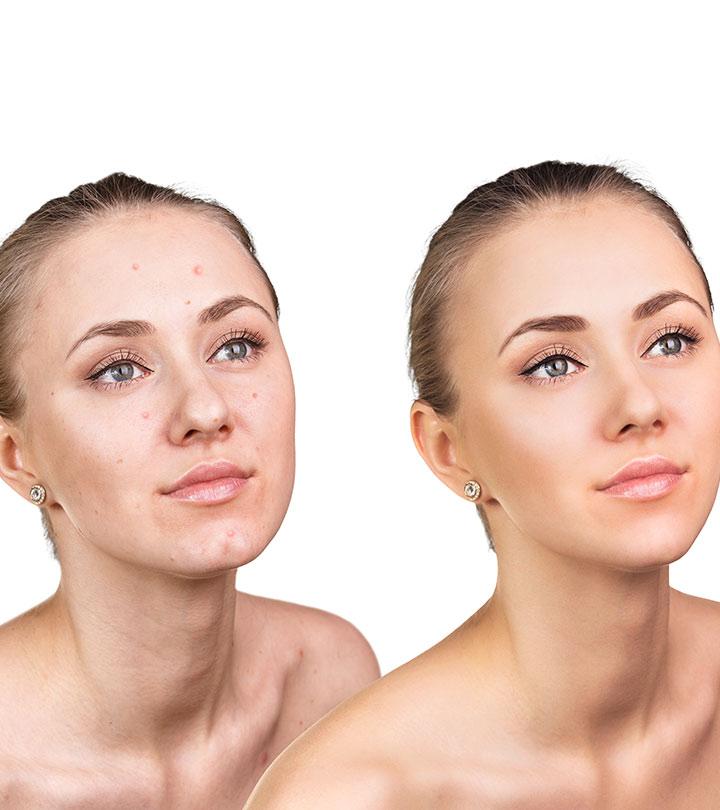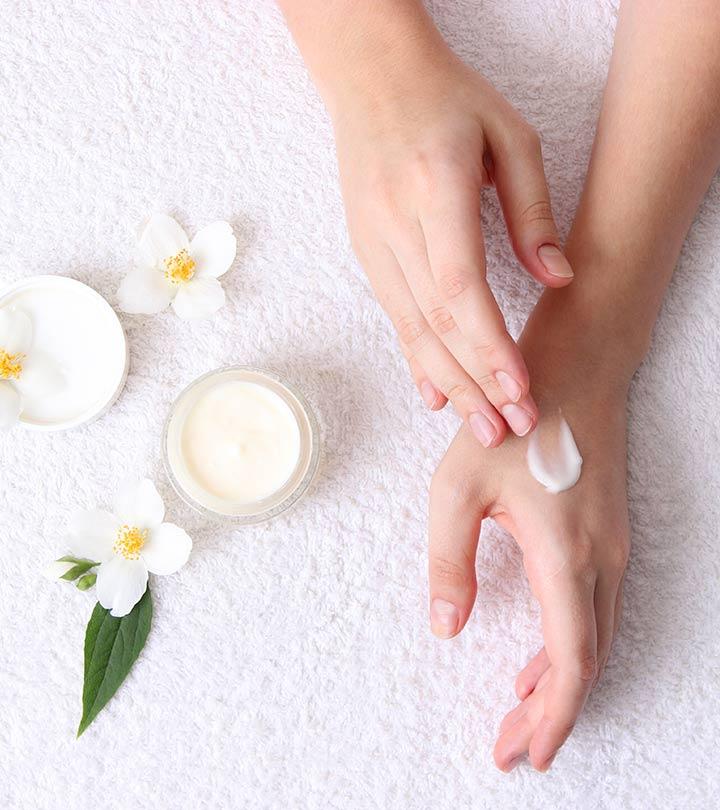Fitzpatrick Skin Types (Phototype): Which One Is Yours?
Level up your skincare game by knowing your skin better and taking care of it the way it deserves.

Image: ShutterStock
You have utterly mistaken if you have thought normal, oily, combination, sensitive, and dry are the only skin types. There is one more to add — Fitzpatrick skin types. Firstly, why do you need to know your skin type? Does it help you choose the right skin care products?
Not exactly. But knowing your skin type helps you understand how to take care of your skin better. In this article, we will delve deeper into the Fitzpatrick skin scale, the different types of Fitzpatrick skin, the risks associated, and how to protect your Fitzpatrick skin. Keep reading to know more.
In This Article
What Is the Fitzpatrick Skin Scale?
Thomas B. Fitzpatrick, a dermatologist, developed the Fitzpatrick Skin Scale or the Fitzpatrick Classification in 1975. This is a scale for classifying the human skin color. Initially, Fitzpatrick developed the scale based on the human skin color and how it responds to various degrees of sun exposure. This scale is widely used for understanding the sun sensitivity of human skin and analyzing the risks of excessive UV exposure, skin cancer, and tanning.
The first classified skin types in this scale were types 1-3. It was accepted widely in dermatology for the phototherapy of skin diseases. Fitzpatrick conducted an outdoor sunscreen study in Brisbane, Australia, and those who participated were fair-skinned people. They were exposed to the midday sun and were classified into three categories (based on how their skin reacted):
- Type 1: included those whose skin burned easily but did not tan at all.
- Type 2: included those whose skin burned easily but did not tan easily (these were mostly red-haired and freckled individuals).
- Type 3: included those whose skin burned and tanned moderately after an hour of midday sun exposure and got dark and pigmented immediately (1).
However, later, researchers identified more skin types and further extended the list.
The U.S Food And Drug Administration adopted the Fitzpatrick skin classification in 1972 to evaluate the SPF value of sunscreens. The current classification system includes six different skin types (we have discussed that later in the article). These skin types were mainly determined by genetic disposition, tanning habits (sunbathing, using tanning beds and tanning creams), and how the skin reacts to sun exposure.
Once you know your Fitzpatrick skin type, it gets easier for you to understand what precautions you need to take to protect your skin. Let’s now take a look at the Fitzpatrick skin classification.
Note: Some of you may find that your skin type does not fit completely into any of these classifications. In such cases, choose the one where you find the maximum matches. Now, let’s find out your skin type.
What Are The Different Fitzpatrick Skin Types?
Fitzpatrick Skin Type 1
Common Characteristics
- Skin Color (before sun exposure): Ivory
- Eye Color: Light gray, light blue, light green
- Hair Color: Blond or red
How This Skin Type Reacts To The Sun
- Always freckles
- Doesn’t tan
- Always peels
- Always burns
Fitzpatrick Skin Type 2
Common Characteristics
- Skin Color (before sun exposure): Fair (or pale)
- Eye Color: Blue, green, or gray
- Hair Color: Blond
How This Skin Type Reacts To The Sun
- Often freckles
- Rarely tans
- Often peels
- Often burns
Fitzpatrick Skin Type 3
Common Characteristics
- Skin Color (before sun exposure): Beige or fair with golden undertone
- Eye Color: Brown or hazel
- Hair Color: Light brown or dark blonde
How This Skin Type Reacts To The Sun
- May freckle
- Burns occasionally
- Tans occasionally
Fitzpatrick Skin Type 4
Common Characteristics
- Skin Color (before sun exposure): Light brown or olive
- Eye Color: Dark brown
- Hair Color: Dark brown
How This Skin Type Reacts To The Sun
- Doesn’t freckle
- Rarely burns
- Often tans
Fitzpatrick Skin Type 5
Common Characteristics
- Skin Color (before sun exposure): Brown or dark brown
- Eye Color: Dark brown
- Hair Color: Dark brown or black
How This Skin Type Reacts To The Sun
- Rarely freckles
- Hardly burns
- Always tans
Fitzpatrick Skin Type 6
Common Characteristics
- Skin Color (before sun exposure): Dark brown to darkest brown or black
- Eye Color: Brownish black
- Hair Color: Black
 Quick Tip
Quick TipHow This Skin Type Reacts To The Sun
- Never freckles
- Never burns
- Always tans darkly
Now, you are aware of your skin type and how it reacts to sun exposure. But what risk does it carry for you and how can you prevent that? Find the answers in the next section.
Risks Associated With Your Skin Type And How To Protect It

Fitzpatrick Skin Types 1 And 2
If you fall into this category, you are at risk of developing:
- Skin cancer (melanoma)
- Sun-induced skin aging
- Sun damage (1)
To protect your skin,
- Always use sunscreen with SPF 30 or more.
- Avoid excessive exposure to the sun and stay in the shade when you are out.
- Always wear protective clothing and use a wide-brimmed hat and sunglasses (with UV block).
- Do an all-over body check to locate any abnormalities in your skin.
 Quick Tip
Quick TipFitzpatrick Skin Types 3 To 6
If you fall into this category, you are still at risk of developing:
- Skin cancer (melanoma)
- Sun damage
- Photoaging
This is especially true for those who have Fitzpatrick Skin Type 3 (1).
According to Maritza I. Perez, MD and Senior Vice President of the Skin Cancer Foundation, people with darker skin tones are also at the risk of developing melanoma. Though it is true that excess melanin helps protect the skin to a certain extent, it is a misconception that those with darker skin cannot get sunburned or develop skin cancer (2).
To protect your skin,
- Avoid excessive sun exposure.
- Use protective clothing and wear wide-brimmed hats whenever you are spending a long time under the sun.
- Use a sunscreen with SPF 15 and more.
- Check your skin for any changes.
Acral Lentiginous Melanoma (ALM), a type of melanoma that appears under the nails and on the palms and feet soles, is common in people who have dark skin (2).
Apart from determining the extent and risk of sun damage, Fitzpatrick Skin Type classification is used for:
1. Determining the chances of successful results before laser hair removal.
If you have a higher degree of preablative pigmentation, it will increase your risk of developing hyper or hypopigmentationi XA condition when the melanocytes do not produce enough melanin, leading to certain areas of skin becoming lighter. after laser hair removal. In that case, Fitzpatrick Skin Types 4-6 have a greater chance of experiencing
- Edemai XThe medical term for swelling that occurs when excess fluid gets trapped in the body tissues, mainly in feet, arms, and legs.
- Skin crusting
- Blistering
- Scarring
- Dyspigmentationi XA condition when the formation or distribution of melanin in the skin becomes abnormal, leading to hypo or hyperpigmentation. (1)
2. Finding out the success rate (with minimal risk) of chemical peeling and dermabrasion.
Fitzpatrick Skin Types 1 to 3 have minimal risk of developing pigmentary complications, but there is the risk of developing postoperative erythemai XA skin reaction that causes redness and inflammation due to conditions that aren’t underlying diseases. . Fitzpatrick Skin Types 4 to 6 have a higher risk of developing pigmentary complications and deep wounds.
3. Finding your tolerance to bleaching agents.
Fitzpatrick Skin Types 1 to 3 may experience some topical reactions, but usually, the side effects go away once you stop using the product. However, those with darker skin tones might experience
- Dryness
- Irritation
- Post inflammatory hyperpigmentation
Infographic: A Complete Guide To Fitzpatrick Skin Types
While the basic concept of oily, dry, and combination skin may help you choose your skin care products, understanding the concept of Fitzpatrick skin types will further help you achieve gorgeous skin. We have created a quick glance sheet for you so you always remember these skin types. Check out the infographic below now!

Illustration: StyleCraze Design Team
The Fitzpatrick system is a guide to determine how the skin reacts to the sun. The different Fitzpatrick skin types are categorized as per their melanin content and risk of sunburn. For example, skin with little melanin is at the greatest risk of UV damage. In contrast, those with high melanin content are safe up to a certain extent (not completely, though). Knowing your Fitzpatrick skin type will help you take appropriate preventive measures and protect your skin from long-term UV damage. We hope the pointers discussed in the article have helped you understand the Fitzpatrick Skin Scale.
Frequently Asked Questions
What is the most common Fitzpatrick skin type?
The most common type of Fitzpatrick skin type is type 3, followed by types 1 and 2 (3).
What is true of Type 6 skin on the Fitzpatrick scale?
Individuals with type 6 on the Fitzpatrick scale never burn their skin and tan quickly. However, they are still at a lower risk of developing skin cancer and photoagingi XSigns of premature skin aging caused by repeated exposure to harmful ultraviolet rays, primarily from the sun. than types 1 to 3.
Which Fitzpatrick skin type has psoriasis?
Psoriasis may appear on any Fitzpatrick skin type, but it is more common for skin types 1 to 3. People with skin types 4 to 6 are less likely to develop psoriasis. However, they may still be at risk, especially if they have a family history or other risk factors.
Can one’s Fitzpatrick skin type change over time?
Fitzpatrick skin type cannot change over time as it is genetic and determined by the amount of melanin in the skin. Certain factors like sun exposure, hormonal changes, and certain medical conditions or medications may alter the skin’s appearance or sensitivity to UV rays. While these factors may affect the skin’s appearance or behavior, they do not change an individual’s underlying Fitzpatrick skin type.
How is the Fitzpatrick skin type chart used in skincare?
The Fitzpatrick skin type chart helps identify an individual’s skin type and determine the appropriate skincare regimen and sun protection measures. Skincare products and treatments may be tailored to the individual’s skin type considering their skin sensitivity, pigmentation, and susceptibility to sun damage. For example, individuals with Fitzpatrick skin types 1 and 2 may require gentler skincare products and stronger sun protection measures. On the other hand, people with Fitzpatrick skin types 3 to 6 may need a different approach to skincare with a focus on addressing hyperpigmentation, age spots, and other signs of photoaging. They may benefit from products containing ingredients like vitamin C, retinol, and niacinamide, which can help brighten the skin and improve its texture and tone.
Where does Indian skin fall on the Fitzpatrick skin type scale?
In the Fitzpatrick skin type system, Indian skin is often considered between type 4 and type 5. This means Indian skin has more natural pigmentation, tans easily, and is less likely to get a sunburn compared to lighter skin types. When it comes to UV phototherapy, a treatment using ultraviolet light, Indian skin generally handles it well. For Indian skin, the minimal erythema dose (MED), i.e., the amount of UV radiation that causes slight redness, is estimated to be around 61.5 ± 17.25 J/cm for UVB therapy. This knowledge helps in customizing UV treatments to be effective while preventing overexposure (1).
Key Takeaways
- The Fitzpatrick scale is based on the human skin color and its response to different degrees of sun exposure.
- It helps understand how sensitive the different types of human skin are to the sun and analyze the risks of excessive UV radiation exposure, skin cancer, and tanning.
- The Fitzpatrick scale helps take appropriate preventive measures to protect the skin from long-term damage and choose appropriate skin treatment options.
Discover and understand more about Fitzpatrick skin types. Learn how to identify and treat different skin types for optimal results from the interesting video given below.
References
Articles on StyleCraze are backed by verified information from peer-reviewed and academic research papers, reputed organizations, research institutions, and medical associations to ensure accuracy and relevance. Read our editorial policy to learn more.
- “Fitzpatrick Skin Typing…” Indian J Dermatol Venereol Leprol.
- “Dark Skin Tones and Skin Cancer…” Skin Cancer Foundation.
- “Laser Fitzpatrick Skin Type…” National Library of Medicine.






